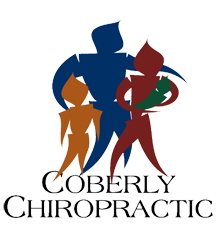How Upper Cervical Spinal Misalignments Affect TMJ Disorders & What To Do About It
It is common for people to seek the care of healthcare professionals when they are suffering from TMJ pain, which stands for pain in the temporomandibular joint. After all, the jaw is a massive hinge. The TMJ is responsible for connecting the bottom portion of the jaw to the top portion of the jaw. The skull rests on each side. People may not realize just how often they use their jaw. It is important for yawning, talking, and eating. If the jaw is not working properly, this can lead to a significant amount of pain and discomfort. Why do people suffer from pain in the jaw? How does upper cervical misalignment contribute to pain in the jaw? Keep reading to learn more…
Common Causes of Pain in the Jaw
There are several common reasons why people may have pain in the jaw. These include:
- Some people are involved in serious motor vehicle accidents where they suffer a direct blow to the mouth
- People may have issues clenching or grinding their teeth at night, leading to issues with the TMJ joint
- Other people carry their stress in this location, leading to pain in the jaw
Even though these are common reasons why people might suffer from jaw pain, it is also possible for people to develop pain in the TMJ area due to issues with the upper cervical spine. How does this happen?
Looking at the Upper Cervical Region as a Nidus for Issues
The jaw and the neck are directly related to each other. It is not uncommon for jaw pain to radiate down to the neck, around the ear, or even to the back of the skull. There is a direct connection between the upper cervical spine and the TMJ. This has to do with the atlas vertebra. This is the uppermost bone in the neck.
If the atlas is out of alignment, it can cause asymmetry when it comes to muscle tension and posture. As a result, there may be an imbalance and how the jaw moves. This can lead to significant discomfort. In addition, the atlas also protects crucial components of the central nervous system. Therefore, the upper cervical spine can lead to TMJ issues when it is not aligned properly.
Treating Misalignment in the Upper Cervical Region of the Jaw
Fortunately, there are ways to treat these alignment issues. A trained chiropractor can take a look at the jaw and atlas vertebra. Then, he or she can take specific measurements to make sure they are aligned properly. If there are alignment issues, a chiropractor can use manual therapy known as chiropractic adjustments to shift the atlas back into the right spot. That way, muscles, nerves, ligaments, and tendons all work properly between the neck and the jaw. This can go a long way toward allowing the jaw to function properly, alleviating chronic pain and discomfort that may otherwise be present.
Rely on an Experienced Chiropractor for Help
Ultimately, it is important for everyone to make sure they understand why they might be suffering from pain in the jaw. Even though there are certain situations where this could be a bone issue, a muscle issue, or a scalp issue, it is important not to overlook the upper cervical region.
People who have alignment issues in the upper cervical portion of the spine may develop pain in the jaw. In this situation, it is important to reach out to an experienced chiropractor for help. A chiropractor can take a look at the jaw, make sure the spine is aligned properly, and perform adjustments to avoid possible complications and side effects in the future. If you, a loved one or close friend is experiencing neck or jaw pain, give us a call. We’re here to help!


